Can ESP (WEF) + Stone = WEG 2018 for the FEI?
The right mix of masters could bring the WEG back to the US, or so we would like to speculate… I had the chance to interview one of the individuals who could make this happen, Michael Stone. We spoke twice this year, once in Wellington during the WEG trials at WEF and then again in Lexington directly before the WEG Final Four on Saturday night. We touched on WEF and WEG impressions and strategies.
Who is Michael Stone?
Born and raised in Ireland, Stone, 52, is a former International show jumping rider. He also competed in Eventing and Dressage at a national level.
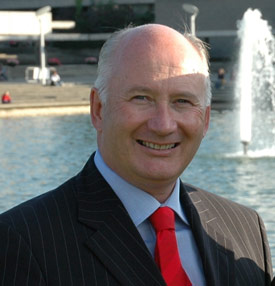
Aside from his riding experience, I would venture to say he has an extremely well rounded resume in equestrian sport. Stone has held several titles at the Federation level spanning two decades, including Secretary General of the Equestrian Federation of Ireland from 1987-1997 as well as FEI Assistant Secretary General, FEI Sports Director and FEI Secretary General from 1997-2007.
Plus he has served as Team Manager of the Irish Team and the Irish Junior and Young Riders Teams during several national and international events, including the 1996 Olympic Games in Atlanta and the 1994 FEI World Equestrian Games in The Hague. Before he joined the FEI in 1997, he also spent five years as Management Director of his family’s horse feed business.
Within a week after leaving the FEI, Stone was standing on the polo field at Wellington with Mark Bellissimo of ESP. That was 2007 and after a year of consulting, Stone became a permanent fixture in Wellington.
EqSol: Tell us about all the hats you’ve worn and how they fit.
MS: I feel quite lucky to have worn all these ‘hats’ in so many aspects of the sport. It certainly gives me unique perspective and I don’t think many people have had that opportunity.
I was involved in governing eventing, dressage and show jumping in my role as the Secretary General of the Irish Federation (the title is considered to be synonymous with President or CEO). Government of a sport means constantly learning about the many layers of what makes the sport tick, from the rules and regulations to those who are committed to competition. When I managed the Irish teams it was not only rewarding to further support the sport, but I gained an inside look at how difficult the role of a rider truly is. That experience gave me invaluable insight to working with riders through the FEI and now understanding the exhibitors at WEF and the other events hosted by ESP.
In my tenure with the FEI, what I had garnered in my years serving the Irish Federation helped me to rise to the role of developing and enforcing the rules for the Olympic disciplines of show jumping, dressage, and three-day eventing as well as for endurance, reining, vaulting, driving in more than 130 countries. One of the most interesting projects I worked with was facilitating the establishment of the FEI Coaching System. It’s a system that works with developing not just riders but coaches for developing countries. Many of the South American riders we see here developed under that system. Jeremy Mullins leads it now.
My current position as president for ESP is very different than my previous positions in non-profit, governing organizations. Here we are motivated to create the best show in the world, an equestrian destination.
EqSol: Tell us more about how you landed here and what you do in your current position.
MS: In 2007, I had a disagreement with Princess Haya. Essentially one of us had to go, she was appointed and I was hired, so it was me. I left the FEI on a Wednesday, Mark Bellissimo called me on Friday, Saturday we had a deal and by the following Wednesday I was standing in the polo field. For the first year I worked as a consultant from Switzerland and now I live here permanently.
I’m involved in every aspect of the business from sponsorship and marketing to scheduling and special events. I run the business of equestrian show business. And show in this sense truly does have a double meaning – one being top-notch competition for riders at all levels and the other is fabulous equestrian entertainment for spectators of all ages.
EqSol: What have you done and propose to do for WEF competitors?
MS: What have I done? Spent millions changing all the footing. I worked with Mark to find the right people and put new European footing in every ring. I had new jumps built. We bring in top judges, top course designers to a world-class facility. We reduced the entry fees for the Grand Prix classes by 10%. We worked on the show schedule, introduced new classes likes the Young Rider Grand Prix, a $500,000 Grand Prix, a Puissance during Nations Cup Week, and the Charity Event will return this year. We raised $500,000 for charities in 2010, this year our goal is to raise a million.
We are also working with the USEF to give the top thirty riders on the computer list a special deal for their rankings, a similar concept to the invitational style in Europe.
We continue to invest in the property. We consolidated the showgrounds, all competition will be on the north end now. All our numbers – sponsorships, entries vendors – are up, not down. I think what we have done and the continued enhancements planned are culminating to achieve our goal of creating the best for the best. If you want to compete at the top of the sport, you come here.
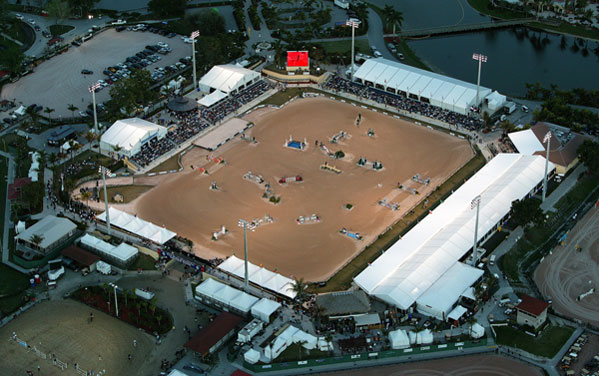
EqSol: For spectators?
MS: Currently the shows are geared more towards the exhibitors than the spectators. We aim to enhance the spectator experience, but it is a slow process. We continue to promote our evening events. We offer a nice media center and encourage media to cover events. There is a list of great classes worthy of press coverage. We would like to see TV coverage, that comes from bigger sponsors and larger audiences, both of which we are developing.
EqSol: Speaking of world-class, we are fresh off the 2010 WEG. Based on your experience, will you share your impressions?
MS: This is the first WEG where I haven’t had an official role as Team Manager or on staff, so that was a big change. All World Championships are fantastic. It’s the best quality in horses and riders. Lexington is horse country and the setting is beautiful. Both the indoor and outdoor stadiums are fabulous and the courses from the footing to the creative jumps to the design were excellent.
There were some issues with this event, possibly some unavoidable and certainly ones we can learn from. As fabulous as the Kentucky Horse Park is, the grounds are spread out over acres so there was a lot of distance between venues. Not only did that mean a lot of walking for spectators, but more significantly it is a loss of intimacy. In places like Aachen and Wellington the layout is more compact. You feel closer to the riders and the action. Pricing was another factor. It was expensive to truly experience the entire games, so most attended their discipline only. A lot of the other disciplines could have drawn more crowds had seats been available for a low general admission price.
Of course it’s easy to be wise post event. Overall I believe thousands of equestrians from all over the world had a memorable experience.
EqSol: And tell us about your plan to bid on the WEG in 2018.
MS: The bid is due next year. It is an intensely detailed proposal. We’ve been working with Wellington Village, Palm Beach city government and the state of Florida on the plan and the potential economic impact. In Lexington the impact was estimated at $180 million. Already a strong tourist and equestrian state, I think it the impact could be more in Florida.
Our experience at ESP is apparent and the facility footprint is similar to Aachen – compact. With the international arena and the extensive stabling, parking for competitors and spectators with separate entrances, we have an established infrastructure. We would definitely have to expand in particular areas, build more seats, a cross-country course and other details in order to host a World Championship event spanning eight disciplines. But our current team is strong and can run an event of this magnitude.
After we submit our bid we won’t know the decision until April of 2013. That would give us five years to prepare.
EqSol: So what ideas do you have to create the ultimate WEG?
MS: An intimate equestrian experience that supports every aspect of the sport – reasonably priced for the spectators with opportunities to interact with the energy of the event and a fantastic facility for competition.
Economic impact aside, bringing the WEG to Florida would mean the entire state focuses on equestrian sport. It raises awareness, generates improvements to streets and roads, telecommunications and infrastructures. It makes equines and equestrians a central focus and that is ultimately what it is all about – the horse and horse sport.
Thank you Michael for sharing your knowledge and insight. We will see you at future WEFs and look forward to WEG 2018 in Wellington.


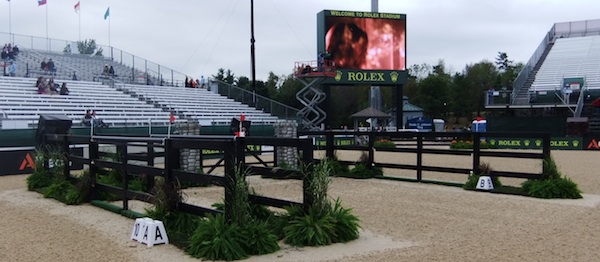



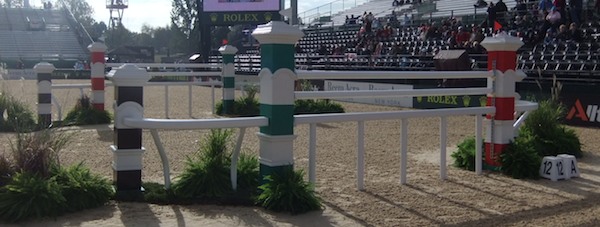





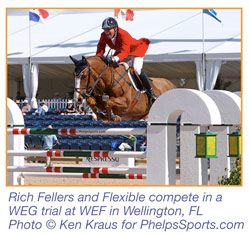
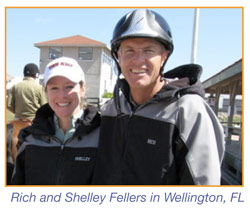 EqSol: What other horses will go to Europe?
EqSol: What other horses will go to Europe? 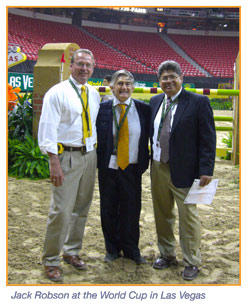 Jack Robson
Jack Robson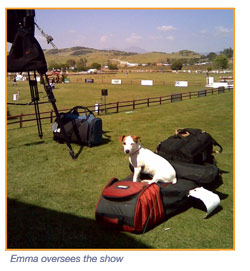 EqSol: And your future plans?
EqSol: And your future plans? EqSol: How did you become a course designer? What is your horse history?
EqSol: How did you become a course designer? What is your horse history?